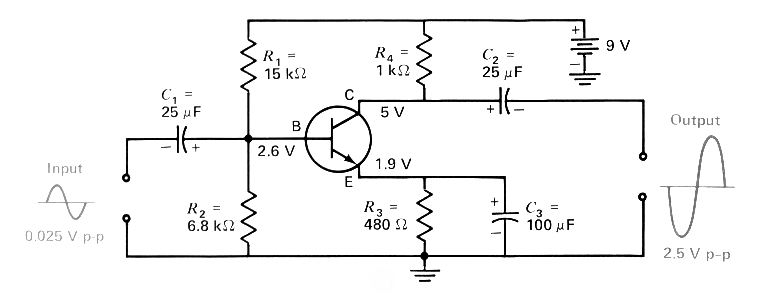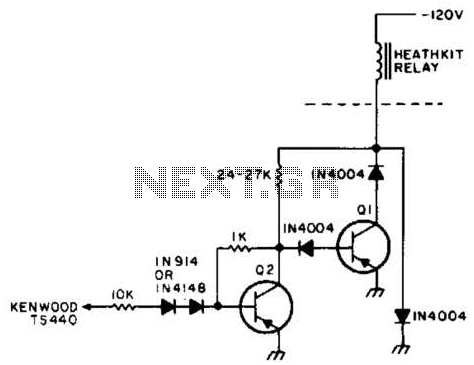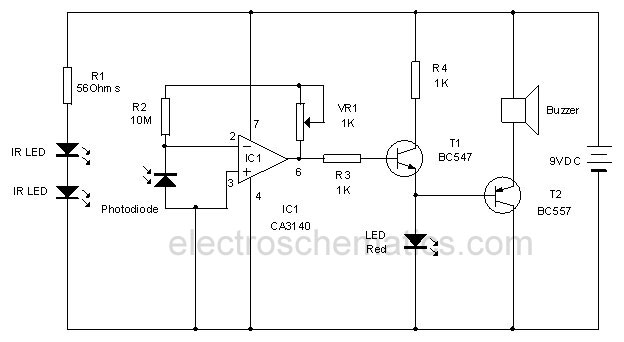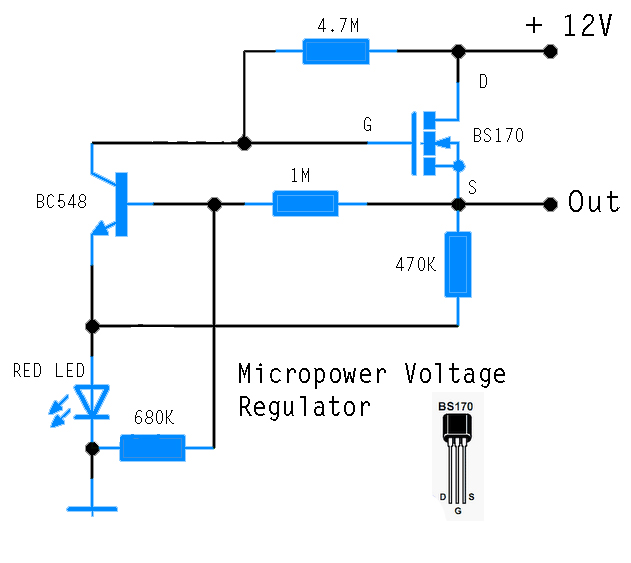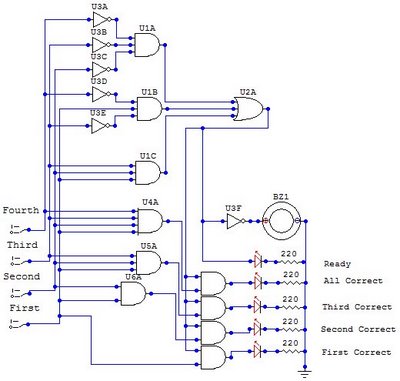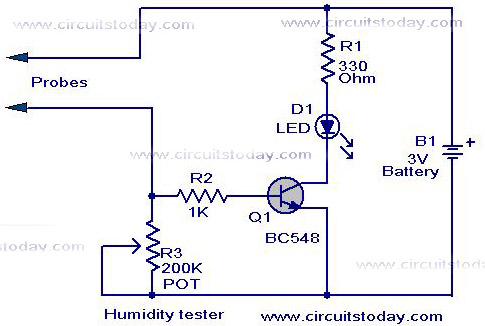
With a 7-Channel Smart Temperature Sensor MAX6698 circuit diagram
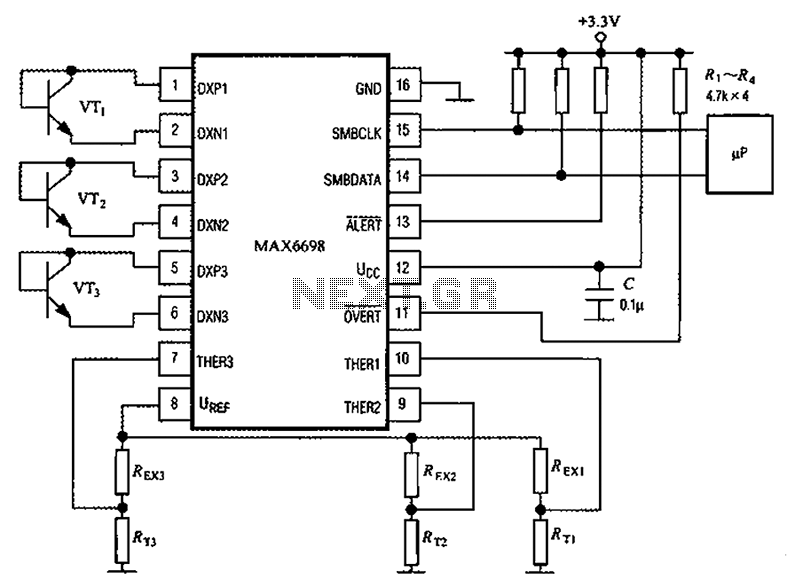
Channel 7 presents a circuit diagram of a smart temperature sensor using the MAX6698. This circuit includes three transistors (VT1, VT2, and VT3) and three thermistors (RT1, RT2, and RT3). An internal reference voltage source is provided via resistors (UREF REX1, REX2, and REX3) to supply power to the three thermistors. The voltage drop across each thermistor is connected to the THER1, THER2, and THER3 pins, respectively. Suitable transistor models for temperature sensing include CMPT3904, SST3904, KST3904-TF, SMBT3904, and FMMT3904CT-ND.
The circuit configuration of the MAX6698 smart temperature sensor is designed to monitor temperature variations accurately through the use of thermistors, which are temperature-sensitive resistors. The three thermistors (RT1, RT2, RT3) are strategically placed to measure different temperature points, allowing for a comprehensive assessment of environmental conditions. Each thermistor's resistance changes with temperature, producing a corresponding voltage drop that is read by the MAX6698.
The transistors (VT1, VT2, VT3) serve as amplifiers or switches in the circuit, enhancing the signal received from the thermistors. The choice of transistors, such as CMPT3904, SST3904, KST3904-TF, SMBT3904, and FMMT3904CT-ND, provides flexibility in terms of performance characteristics, including gain and frequency response, which can be critical depending on the specific application.
The internal reference voltage source, created by the resistors UREF REX1, REX2, and REX3, ensures that the thermistors are powered adequately and consistently. This stable power supply is crucial for accurate temperature readings, as fluctuations in voltage can lead to erroneous measurements.
Overall, the MAX6698 circuit diagram illustrates a sophisticated approach to temperature sensing, integrating multiple components to achieve precise and reliable performance in various applications, from industrial monitoring to consumer electronics. The design's modular nature allows for easy adjustments and scalability, making it suitable for a wide range of temperature sensing needs. Channel 7 has a circuit diagram of a smart temperature sensor MAX6698 is shown in Figure: MAX6698 maximum temperature with three transistors (VT1 ~ VT3) and three thermistors ( RT1 ~ RT3). The internal reference voltage source via a resistor UREF REX1 ~ REX3 were given three thermistor power supply, the voltage drop across the thermistor respectively supplied THER1 ~ THER3 pins. Temperature transistor can be used CMPT3904, SST3904, KST3904-TF, SMBT3904, FMMT3904CT-ND models.
The circuit configuration of the MAX6698 smart temperature sensor is designed to monitor temperature variations accurately through the use of thermistors, which are temperature-sensitive resistors. The three thermistors (RT1, RT2, RT3) are strategically placed to measure different temperature points, allowing for a comprehensive assessment of environmental conditions. Each thermistor's resistance changes with temperature, producing a corresponding voltage drop that is read by the MAX6698.
The transistors (VT1, VT2, VT3) serve as amplifiers or switches in the circuit, enhancing the signal received from the thermistors. The choice of transistors, such as CMPT3904, SST3904, KST3904-TF, SMBT3904, and FMMT3904CT-ND, provides flexibility in terms of performance characteristics, including gain and frequency response, which can be critical depending on the specific application.
The internal reference voltage source, created by the resistors UREF REX1, REX2, and REX3, ensures that the thermistors are powered adequately and consistently. This stable power supply is crucial for accurate temperature readings, as fluctuations in voltage can lead to erroneous measurements.
Overall, the MAX6698 circuit diagram illustrates a sophisticated approach to temperature sensing, integrating multiple components to achieve precise and reliable performance in various applications, from industrial monitoring to consumer electronics. The design's modular nature allows for easy adjustments and scalability, making it suitable for a wide range of temperature sensing needs. Channel 7 has a circuit diagram of a smart temperature sensor MAX6698 is shown in Figure: MAX6698 maximum temperature with three transistors (VT1 ~ VT3) and three thermistors ( RT1 ~ RT3). The internal reference voltage source via a resistor UREF REX1 ~ REX3 were given three thermistor power supply, the voltage drop across the thermistor respectively supplied THER1 ~ THER3 pins. Temperature transistor can be used CMPT3904, SST3904, KST3904-TF, SMBT3904, FMMT3904CT-ND models.
